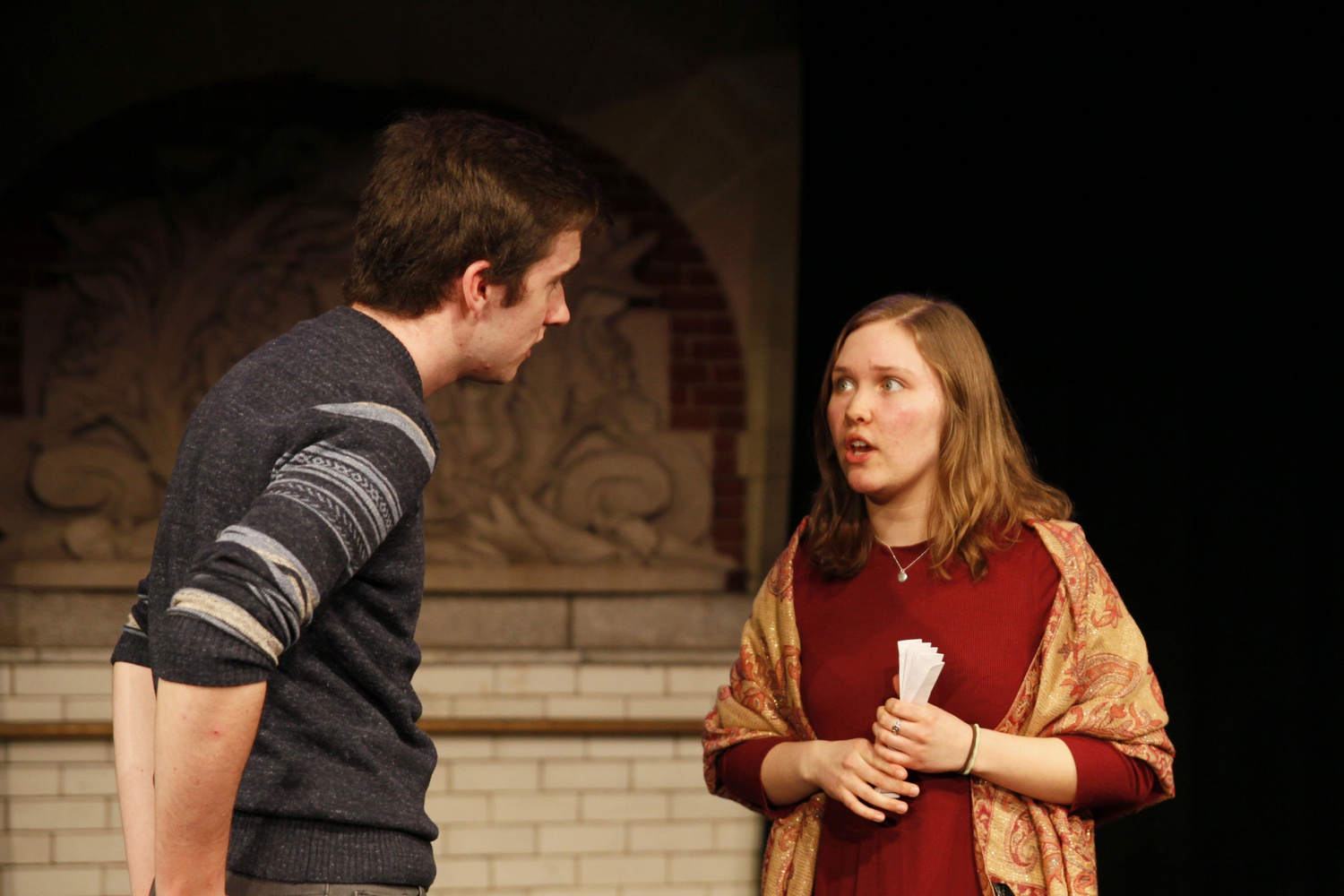
News
Pro-Palestine Encampment Represents First Major Test for Harvard President Alan Garber

News
Israeli PM Benjamin Netanyahu Condemns Antisemitism at U.S. Colleges Amid Encampment at Harvard

News
‘A Joke’: Nikole Hannah-Jones Says Harvard Should Spend More on Legacy of Slavery Initiative

News
Massachusetts ACLU Demands Harvard Reinstate PSC in Letter

News
LIVE UPDATES: Pro-Palestine Protesters Begin Encampment in Harvard Yard
‘Diamonds’ Sparkle in the Adams Pool

A queen falling in love with a donkey. A black-clothed man speaking to a skull. Two young lovers declaring their feelings on either side of a balcony wall. Some scenes in Shakespeare have become so familiar, so ingrained within Western culture, that they act as shorthand for the plays they belong to. Sometimes, they even provoke recognition in those who have never read or seen a Shakespeare play in their lives. Many equally powerful scenes, though, do not achieve nearly the same level of fame. Troilus and Cressida’s uncertain, absurdist declarations of love might be familiar only to a handful of literature students; the comedic antics of Falstaff remain likewise obscure.
The Hyperion Shakespeare Company’s “Diamonds in the Ruff,” which ran March 25 to 26 at the Adams Pool Theater, played effective and entertaining tribute to such moments, assembling a sequence of lesser-known pieces from several different plays. The scenes came from comedies, tragedies, and histories alike, and the reason for their obscurity varied as well: Some were drawn from less popular works, while some usually lie forgotten within extremely popular plays. On the whole, each scene justified its own inclusion with bursts of clever wordplay, political eloquence, or raucous comedy, and while many other moments could have been included, nothing seemed obviously out of place.
The actors generally delivered their scenes with skill and enthusiasm. Maddy Granovetter ’19 and Casey R. Goggin ’19 produced particularly tight, animated comedy as a king and his daughter’s lover, and Alice F. Berenson ’16 portrayed a scheming, dangerous, sensual Hotspur in another standout. Nathaniel Brodsky ’18 and Jaime P. Herring ’17 also created fiery, bantering chemistry as Mercutio and Romeo.
Occasionally, though, some of the performances seemed more like poised, articulate recitations than actual acting. The characters in “Richard II, 4.3” spoke delicately and clearly, but often without recognizable or dynamic emotion—the staging, too, verged on the uninteresting and posed. And this flatness could become a problem for accessibility. Without plot context, and given the simple set and lack of costumes, the lack of emotional and stage cues sometimes rendered the scenes difficult to follow.
Most of the scenes nonetheless remained transparent, largely to the credit of inventive directorial choices. Shakespeare provides very few stage directions within the text, leaving directors a large amount of leeway to create their own situations and blocking: Kier W. Zimmerman ’19, an active Crimson news editor, did an especially clever job of blocking “Romeo and Juliet, 2.4” so as to draw out the innuendos and visual gags hidden within Shakespeare’s writing. Like a couple other of her fellow directors, she also made good use of the Adams Pool Theater’s various steps, mirrors, and (in this case, phallic) columns in the absence of any actual set.
Despite the show’s many successful (and some of its less-than-successful) moments of execution, the most important determinant of each scene’s success remained its basic suitability to the format. The best scenes in the collection tended to be the simplest ones: the direct sexual clowning and generational tension in “The Two Gentlemen of Verona, 3.1” shone, as did the tense marital struggle in “Henry IV, Part I, 2.3.” These scenes weren’t simple from a literary point of view—they’re extremely rich, of course—but their situations were instantly recognizable, and their physicality kept them entertaining even in the absence of actual plot dynamics. Among all the diamonds, they sparkled the most.
—Staff writer Charlotte L.R. Anrig can be reached at charlotte.anrig@thecrimson.com.
Want to keep up with breaking news? Subscribe to our email newsletter.
